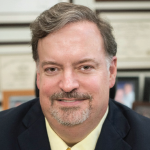Dr. Saag: I’m a social person, I enjoy interacting with my patients and my colleagues, and I like teamwork, joining together to solve problems and thinking about strategic challenges. That combination is part of what drove me to the ACR.
Plus, rheumatologists are a fun, exceptionally smart group of people who have a lot of energy, so they were a nice group of people to be with. In addition, I have to say that the ACR has probably got about the best staff of any organization I’ve ever worked with. They’re just remarkably dedicated and incredibly accomplished, so that also made it fun and easy to be a volunteer.
TR: What was some of your work on those committees?
Dr. Saag: On the Committee on Quality of Care, we took a systematic and rigorous approach to developing guidelines and how we address conflicts. We developed a white paper on quality measures, and we thought about how we, as the ACR, should position ourselves nationally as a premier organization.
During my more recent work on the Committee on Corporate Relations, our focus was on rethinking our relationship with the private sector at a time when our meetings had gone virtual due to the pandemic: How do we maintain the intellectual freedom of the organization and avoid perceptions of conflict? That’s been an interesting topic as well.
TR: As you start your term as president, what work would you like to see the ACR continue or begin in the coming year?
Dr. Saag: One of the things that’s really important to me is fostering the ACR’s relationship with our colleagues in all of the different international rheumatology organizations, including the global “LARs,” as we call them: European Alliance of Associations for Rheumatology (EULAR), Pan American League of Associations for Rheumatology (PANLAR), Asia Pacific League of Associations for Rheumatology (APLAR) and African League Against Rheumatism (AFLAR). We’re part of a global community, so the more we can embrace the ability to address some of these diseases and the challenges we face as professionals in dealing with these problems internationally, the better.
Another has got to be the workforce. There have never been more people interested in becoming rheumatologists than there are now, and yet we don’t have enough slots for all of them. At the same time, we know that major portions of the country are undersupplied by rheumatologists. At my university, we have a six- to nine-month wait to get in to see a rheumatologist. That’s a problem. Related to that are issues of diversity, equity and inclusion. We have a new subcommittee looking into a lot of great ideas to begin addressing the undersupply of diverse participants in the rheumatology workforce and in our training programs.

